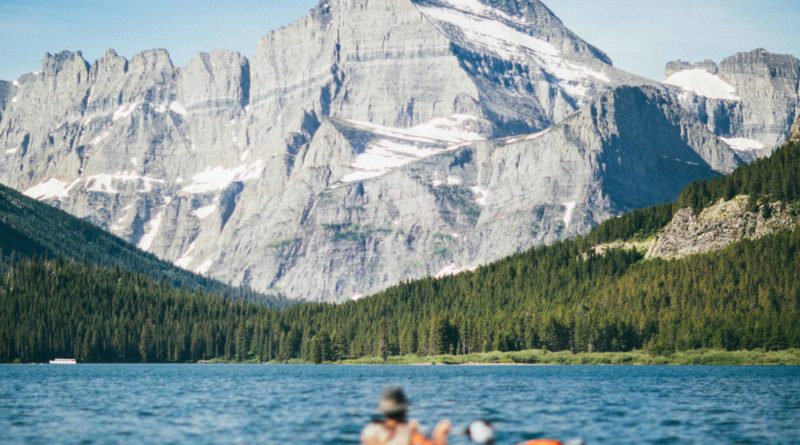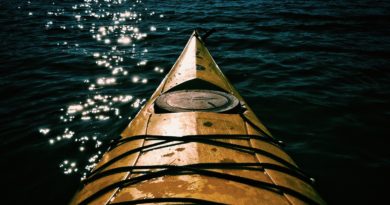Kayak Safety
We mention it a lot, and for good reason. Safety is an essential part of kayaking, and without it, a great time out on the water can easily turn into a nightmare. Follow these basic principles of kayak safety to ensure you have a stress-free and fun time on your trip:
- Know your limits and skill
- Know the area
- Know the weather
- Make a plan, and share it
- Bring safety gear
- Dress appropriately
- Never go alone
We’re going to explore in a little more detail what each of these principles mean.
Know Your Limits and Skill
Unless you are an experienced paddler and know some advanced techniques such as wet exiting and self rescuing, stick to easier areas. You should definitely learn the previously mentioned techniques, but in the meantime, just make sure someone in your group knows them. As a beginner, look to kayak in areas that:
- Have calm water
- Are popular with other paddlers
- This means it’s a tested and preferred area for all skill levels, and if you get in trouble there may be more people to help.
- Prohibit powered boats
- Close to the shore
Know the Area
Once you determined what your skill level is, now you have to find the right place to kayak. Find an area that fits the above criteria as closely as possible. Then, conduct some research, either online, through word of mouth, or in-person.
You want to know the following characteristics:
- The general route paddlers take
- Rocky areas, or underwater hazards along the way
- Tricky currents
- Predictable behaviors
- Does the current or tide change drastically at certain times?
- Is activity from aquatic life different throughout the day?
- In an area where powered boats aren’t common, do they come through at a certain time, or day?
Know the Weather
Even with all of the modern advances in technology, predicting the weather accurately is still a challenge. Research the forecast when planning, and research it again right before you go. Use a phone app or a weather radio once you’re out on the water to keep an eye on the current conditions.
Storms can come in unexpectedly and fast. If you see storm clouds on the horizon, or anything that makes you question the possibility, start turning back. If lightning strikes, turn back as quickly as safely possible. Keep in mind how far you are from your landing point and note how long it would take to get back. Even clouds forming on the distant horizon can create a full-blown storm by the time you reach your landing.
Make a Plan, and Share it
Always write down the critical details of your trip in a plan. Include the:
- Date/time
- Location
- Planned route
- Expected duration
- List of people you’re going with and their contact information
- What you plan to do if you’re out later than expected
Leave your plan with whoever will notice that you’re gone first. Also, leave a copy of your plan in your vehicle.
Bring Safety Gear
Safety gear is essential for kayaking, and while the only gear required by law is a PFD (life jacket) it’s still incredibly important you bring more. This is all outline in our Kayaking Checklist article, but for a quick run down, make sure you bring the following:
- PFD
- As mentioned above, most places require this by law
- Whistle
- Towline
- Spare paddle
- If you’re in a group, a couple of spares can be shared
- Paddle float
- Bilge pump
- If you capsize, this is necessary to remove the water from inside your kayak
- Communication/radio device
- Cell signal is never guaranteed, especially out on the water. Bring some handheld two-way radios and make sure everyone in the group is on the same channel.
- Headlamp
- If you stay out later than expected and it gets dark, the headlamp is not only important for you to see, it’s essential for others to see you.
Dress Appropriately
Hypothermia is a serious threat whenever you’re on the water. You want to dress for the temperature of the water to minimize the risk of hypothermia. Even if the air is 75°, if the water is only 40°, you’re in some serious trouble if you capsize. According to the Cold Water Survival Guide published by the ACA (American Canoe Association), if the water is below 60°F, you need to wear a wetsuit or dry suit. Always dress for immersion and always plan to get wet.
Never Go Alone
If you haven’t figured out by now, kayaking alone is dangerous and never a good idea. Kayaking alone without the skills to self-rescue or wet exit is even worse. If you can’t find a friend to go kayaking with, don’t worry. There are thousands of paddle clubs and you can always join one. Even if you can’t make one of their organized trips, you will certainly find people that will want to go out on a trip with you.
Hopefully, this sheds some light on the seriousness of safety and how important it is to plan ahead. Kayaking is a fun, relaxing, and enjoyable activity, but it won’t be any of those things is it goes wrong. Follow the principles above and you should be worry-free on your next trip!





